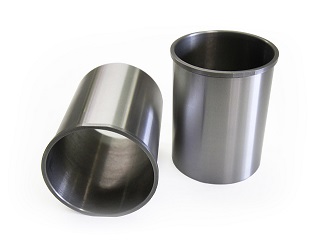
Why Sleeve an Engine?
We sleeve engines for a couple of reasons. The primary reason for sleeving an engine to either repair a cylinder bore or protect it from damage in the first place. Sleeves can also be used to restore a particular bore size if a cylinder has to be “bored out” to repair a cracked or otherwise damaged engine. Some engine builders will also “overbore” their cylinders to increase the engine displacement. Diesel engines are more commonly sleeved than gasoline, but there are reasons to sleeve gas engines as well. High performance diesel engines can produce substantial pressure inside of the bore, so much that damage to cylinders is fairly common. Sleeves intended for high-performance applications can greatly protect the engine from these extreme pressures.
Cylinder sleeves or cylinder liners are often divided into two types: Dry Sleeves and Wet Sleeves.
Most aluminum OEM automotive engine blocks use dry, gray iron cylinder sleeves in their engines. A dry sleeve is either cast into or press fit into the bore of the block. The aluminum bore transfers heat from the sleeve to the coolant contacting the bore.
Simply put, a dry sleeve does not contact the coolant. Rather, it is installed into the wall of the cooling jacket in the cylinder block. By contrast, in a wet sleeve coolant comes in direct contact with the sleeve. Dry sleeves also tend to have thin walls as compared with wet sleeves.
Wet sleeves often have a cooling water gap between the engine block and liner. They also can be manufactured to incorporate cooling passages. Sleeves with cooling passages can also be known as water-jacket sleeves.
Due to being in direct contact with the coolant, wet sleeved cylinders have better cooling and a more even temperature distribution, but this design makes the engine as a whole less rigid.
